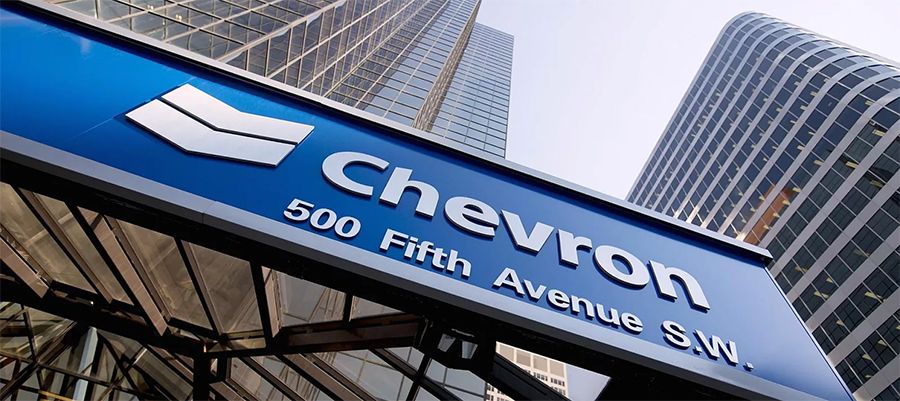
Source: PaxForex Premium Analytics Portal, Fundamental Insight
At first glance, Chevron's third-quarter results appeared rather lackluster. The oil behemoth's adjusted earnings dipped in comparison to both the preceding quarter and the same period the previous year, falling short of analysts' expectations.
However, this seemingly underwhelming performance was predominantly attributable to challenges in its international operations, masking the impressive achievements of its US ventures. These American segments thrived in the second quarter, largely fueled by Chevron's $7.6 billion acquisition of PDC Energy.
During the third quarter, Chevron reported adjusted earnings of $5.7 billion, equivalent to $3.05 per share. This was a modest decline from the second quarter figures of $5.8 billion or $3.08 per share. The dip was primarily driven by weaker international outcomes, marked by a decrease in upstream production by 112,000 barrels of oil equivalent per day (BOE/d) and reduced downstream earnings due to lower margins and output.
Beneath these international setbacks lay the remarkable performances of Chevron's US enterprises. US upstream earnings surged from $1.6 billion in the second quarter to over $2 billion in the third quarter, propelled by a 20% spike in production to 1.4 million BOE/d, setting a new quarterly record for the company. This upswing was largely thanks to PDC Energy, which contributed an additional 179,000 BOE/d to Chevron's production, significantly boosting its earnings.
Chevron also delivered impressive results in its US downstream sector, with earnings reaching nearly $1.4 billion, up from almost $1.1 billion in the previous quarter and $1.3 billion in the same period the previous year. The primary driver was the enhanced margins on refined product sales, with the company benefiting from a full quarter of operation at its Richmond, California refinery, which had been undergoing maintenance the previous year.
Chevron exhibited robust free cash flow amounting to $5 billion, doubling the figure from the preceding quarter. Free cash flow played a pivotal role in Chevron's acquisition of PDC Energy, with expectations that the deal will add $1 billion to its annual free cash flow, assuming an average oil price of $70 a barrel. Given the current crude prices hovering in the mid-$80s, Chevron is positioned to generate even more free cash following its PDC Energy acquisition.
During the quarter, Chevron returned $6.2 billion in cash to its investors, disbursing $2.9 billion in dividends and repurchasing $3.4 billion worth of shares.
Chevron's acquisition of PDC Energy made a significant impact on its US upstream operations during the third quarter, and it's poised to be an even more substantial contributor in the coming year. As Chevron integrates these operations, it anticipates annual savings of over $500 million in capital and operational costs, which will, in turn, bolster its free cash flow.
But the real game-changer came when Chevron recently announced its acquisition of Hess, a move that carries a hefty price tag of $60 billion. This strategic acquisition is set to substantially enrich Chevron's portfolio by adding high-growth assets in Guyana and the cash-generating Bakken. Additionally, it includes complementary holdings in the Gulf of Mexico and a dependable Southeast Asia gas business that generates steady free cash flow.
Chevron's outlook is positive, with expectations that the deal will begin enhancing its free cash flow per share in 2025, coinciding with the commencement of a fourth floating production storage and offloading vessel in Guyana. The acquisition will not only elevate Chevron's five-year production and free cash flow growth rates but also extend its growth trajectory well into the next decade.
These developments have led Chevron to anticipate an 8% increase in its dividend per share in January, marking an acceleration from its recent 6% growth rate. Furthermore, Chevron plans to boost its annual share repurchase rate by an additional $2.5 billion, positioning it at the upper end of its guidance range of $10 billion to $20 billion.
In sum, Chevron's aggressive acquisition strategy this year, including both PDC Energy and Hess, positions it as a more compelling prospect for long-term investors, enhancing its growth potential and financial performance.
As long as the price is above 150.00, follow the recommendations below:
- Time frame: D1
- Recommendation: long position
- Entry point: 153.88
- Take Profit 1: 158.00
- Take Profit 2: 163.00
Alternative scenario:
If the 150.00 level is broken-down, follow the recommendations below:
- Time frame: D1
- Recommendation: short position
- Entry point: 150.00
- Take Profit 1: 146.00
- Take Profit 2: 142.00













